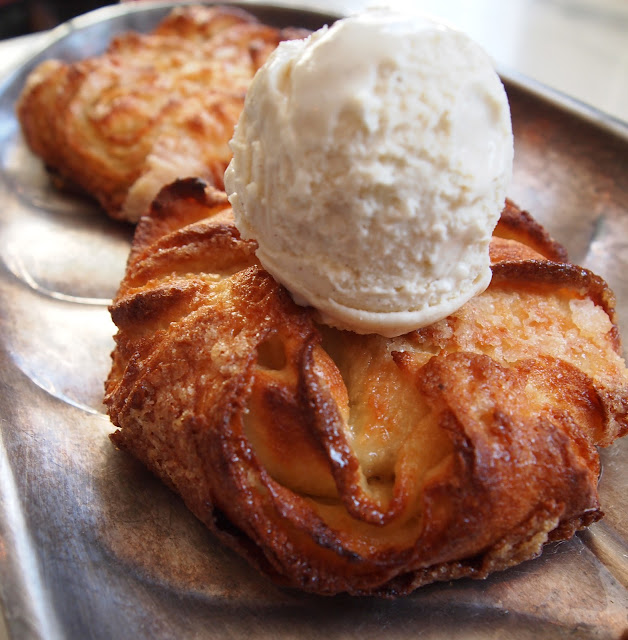Sugaring, Baby!
 |
| Bottling Vermont gold. |
 |
| Make 'em' heart shaped for your sweetheart! |
It's early in the season to begin the long process of making maple syrup. We're a few weeks ahead of schedule but it's been so damn warm lately that Ray and I didn't want to miss the prime sap running days. And lucky that we did because we've hit the motherlode.
 |
| Ray drills the last tap hole. |
The sugaring ideal is a day that rises about freezing and an evening that dips below. The sap in the maple oozes when the heat of the day hits the bark. We don't tap many trees, this year only eight in all. Some trees that show terribly healthy sap production get two taps.
 |
| A row of sap buckets. |
Sap runs completely clear, as crystal as water and barely hints at sweetness. So you may wonder how this all works, if it's clear and barely sweet, where does the syrup come into it?
 |
| The sap's flowing! |
Well, so glad you asked. You boil it. At least we boil it. Fancy people with "sugar shacks" dedicated to large production of Vermont gold use evaporators. But we just use a huge stock pot and major ventilation.
 |
| Starting our collection. Using every available bucket to store sap. |
It takes 40 gallons of sap to make 1 gallon of syrup. And it takes hours to boil down.
 |
| Introducing the Ruthie to the joys of sugaring. |
Once the moisture has evaporated sufficiently (I make sure at least 3/4 of the sap has boiled down), I transfer the thickening sap to a smaller vessel. At this point, I attach a candy thermometer and wait until the temperature reaches 7.1ºF above boiling water. Water boils at an average of 212ºF but it differs depending on your elevation and the atmospheric conditions of your area on any particular day. The temperature I was aiming for was 219.9º. But I also have a hydrometer, which measures the density of the sugar in the syrup. If the hydrometer sinks to the bottom of the hydrometer cup, the sugars are still too low in the syrup. If it bobs in the syrup and hits the red mark indicated on the instrument, you're all good.
 |
| Let the boiling begin! 9am on the dot. |
Once we reach our proper density and temperature, we transfer the syrup to bottles and allow the sediment to settle. Once the syrup has cooled, we carefully pour the syrup off and leave the sediment behind and reboil the syrup to 180ºF. Only then are we ready to bottle (but first we pour the syrup through a fine cloth and sterilize our bottles).
 |
| My sugaring Lab! Let the boiling finish! 9pm, on the dot. That metal tube with the swirly handle is the hydrometer cup. The hydrometer is sitting inside. |
All that work for less than a gallon of maple syrup. But it's all ours, mined from our ancient trees and more delicious than anything deserves to be. I'd say well worth the effort.
 |
| Grading syrup: In the back row, from the left to the right: Vermont Fancy, Grade A Medium Amber, Grade A Dark Amber and Grade B (the darkest). Our syrup is up front, as fancy as can be. |
And to celebrate our bounty, I made pancakes! And now that we have some snow, "Sugar on Snow" can't be far behind...
 |
| Eat 'em if you got 'em! I bet you never look at syrup the same way. |
SOUR CREAM PANCAKES
INGREDIENTS
1 1/2 cups all purpose flour
1 tablespoon baking powder
1 teaspoon salt (I use large flake sea salt)
1 cup whole milk
1/2 cup sour cream
1 tablespoon vanilla bean paste (you can substitute with extract but NEVER imitation)
1 large egg
4 tablespoons unsalted butter, melted
PROCEDURE
•In a large bowl, whisk together the flour, baking powder and salt.
•In another bowl, combine the milk, sour cream, vanilla bean paste and egg. Whisk together until smooth. Slowly pour the melted butter into the milk mixture while you continue to whisk.
•Make a well in the flour and pour in the wet ingredients. Stir with a wooden spoon until the batter is very smooth.
•Spray a hot griddle with non-stick cooking spray and drop 1/4 cup mounds of batter on the grill. Wait until you see bubbles start to rise from the batter and peak underneath the pancake to make sure it's uniformly golden brown. Flip! Continue cooking until the second side is golden brown.
•Serve immediately.


